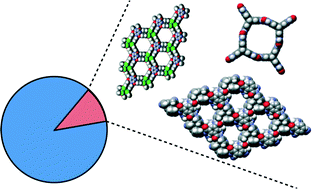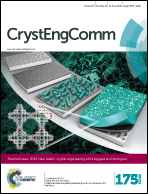Computational identification of organic porous molecular crystals†
Abstract
Most nanoporous solids, such as metal–organic frameworks and zeolites, are composed of extended three-dimensional covalent or coordination bond networks. Nevertheless, an increasing number of porous molecular crystals have been reported that display surface areas and separation efficiencies rivaling those of conventional porous materials. In this investigation, a geometry-based analysis and molecular simulations were used to screen over 150 000 organic molecular crystal structures, resulting in the identification of 481 potential organic porous molecular crystals, a testament to the rarity of these materials. Subsequently, we have computed the surface area and pore dimensions of these structures. This computer-generated database has been used to uncover a number of trends and properties that had not previously been quantified due to the limited number of reported porous molecular crystals. Finally, we have used machine learning to show that the van der Waals surface area and other related descriptors of molecular size are the molecular properties best able to predict a crystal's propensity to form structural voids, which are strong indicators of permanent porosity. We posit that the identified database is a promising resource for discovering candidate structures for gas-separation applications and providing general design guidelines for the production of new porous crystals.

- This article is part of the themed collection: 2016 New talent


 Please wait while we load your content...
Please wait while we load your content...